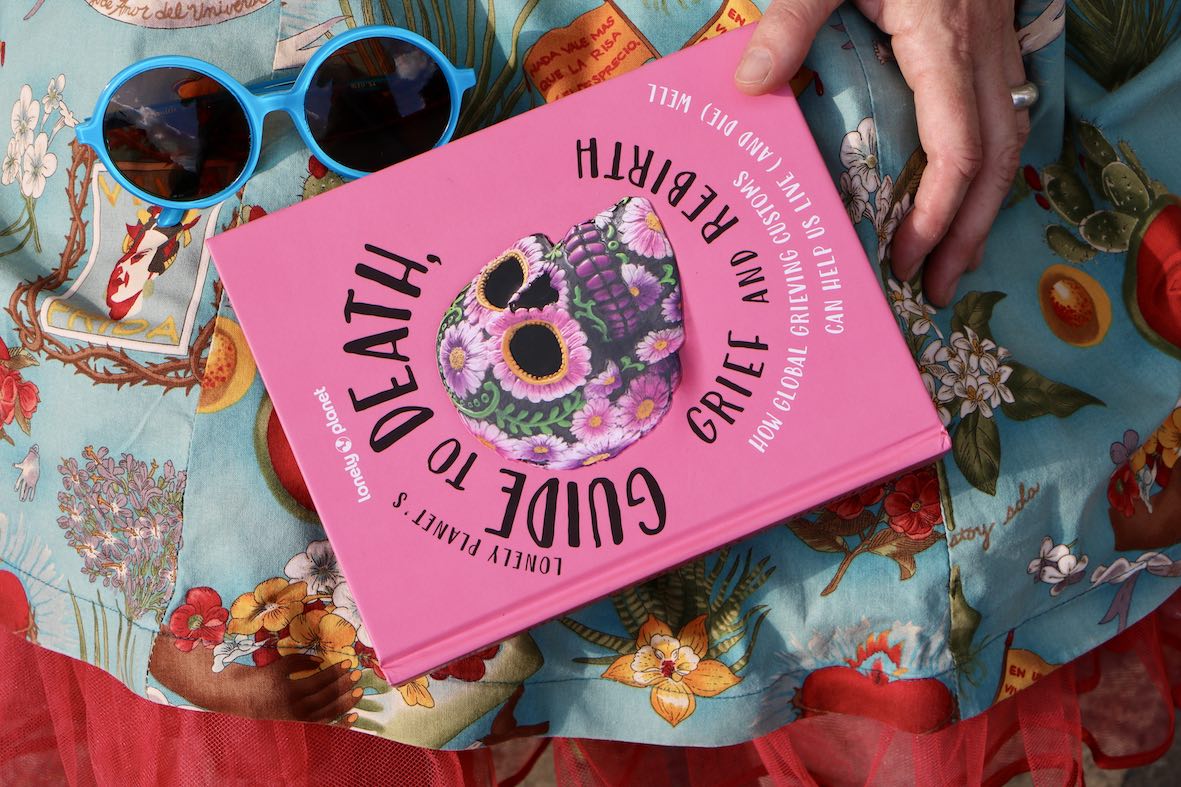03 Sep The Lonely Planet’s Guide to Death, Grief and Rebirth
‘The Lonely Planet’s Guide to Death, Grief and Rebirth’ by Anita Isalska is a delicious buffet, to inspire the armchair traveller. It shows glimpses into a wide variety of global beliefs, customs and cultures focussing on death and mourning.
Unlike the usual format of a Lonely Planet Guide, this is thematic and informative, without the specific information needed for a trip. It is a delightful feast of colourful images and intriguing facts, like this one.
“A single human cremation produces as much carbon dioxide as an 800km car journey.”
‘The Lonely Planet’s Guide to Death, Grief and Rebirth’ tempts with travel destinations; where fascinating events take place at the end of a life. However, this book is also a provocation to consider how we will face our own end. A visit to Varanasi in India for example may be “a visceral reminder of the ultimate destination of life in a world that prefers to keep mortality from view.” And the book includes wise cautions that death tourism requires respect, sensitivity and serendipity.
For those who have grown up without traditions that feel supportive, there are plenty of other ways of being with loss named here. Different and sometimes more universal possibilities for grieving, and honouring our loved ones are gathered in by Anita Isalska, with an invitation to the possibility of exploring more openness around endings.
“Whether it’s an annual event, a support group or a place of remembrance (a monument or cemetery), being present with others who are experiencing loss can be a powerful way to reduce the loneliness of grieving.
This guide surveys some of the broader faith-based traditions. It also covers some of the practices that are being reimagined for a generation seeking more conscious ways to mourn; such as keening in Ireland and the re-emergence of death doulas.
In the contemporary grief theory of ‘Continuing Bonds’ (Klass, Silverman and Nickman) in which it is normal to have an ongoing relationship with deceased loved ones, modern psychology is playing catch up with “Mexico’s flourishing death culture”. And in Madagasca where “the natural instinct to communicate with, and care for, the dead can find expression and relief.” A relationship with ancestors “where loving bonds remain strong even after death,” is integral to many of the cultures in the book.
So many of the funerary practices described link both the past to present and the dead to the living in ways that help us to recognise we are all inescapably part of the cycle of life…and death. This book will be both food for thought as well as food for our ‘wise and well ancestors’.
Grief Tending in community, (which doesn’t get a mention in the book) is informed by the old ways of the Dagara Tribe in Burkina Faso. Find Grief Tending events happening in the UK, and online. They can also be found in many places around the world.
Sarah Pletts is a Grief Tender and Artist who offers workshops in London and online, sharing rituals where grief on all themes is welcome. For more information about Grief Tending events see here.




No Comments